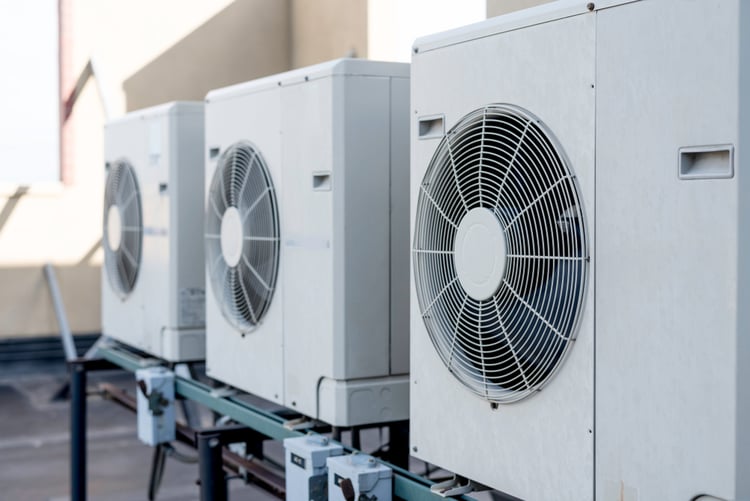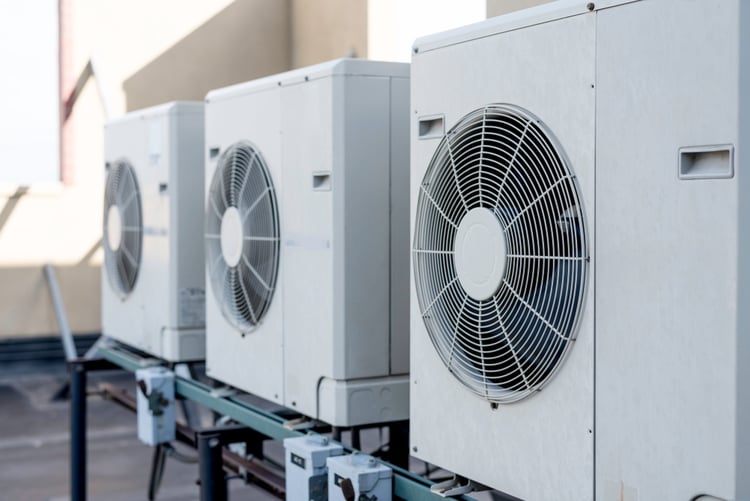Having a numerical energy efficiency indicator is useful when purchasing any equipment. For example, we look at the value of fuel consumption when comparing vehicles, as higher MPG results in fuel savings. SEER or Seasonal Energy Efficiency Index is the metric used to describe unitary air conditioners as well as aerothermal heat pumps operating in cooling mode.
SEER is very useful when comparing refrigeration equipment as it gives a clear indication of the efficiency you can expect. In this article, we will provide an overview of how the SEER value is determined and how it translates into electricity consumption. For a given cooling load in BTU/hour or tons of cooling, the air conditioner or heat pump with the highest SEER will have the lowest electricity consumption.
Reduce your monthly energy bills with a professional air conditioning design.
Space cooling equipment with higher SEER doesn’t just reduce your electricity bills. You may also qualify for incentives like the new energy efficiency tax credits and rebates introduced by the Inflation Reduction Act in August 2022.
How do HVAC manufacturers calculate the SEER value?

Traditionally, the performance of heating and cooling equipment has been described with the Coefficient of Performance (COP) or Energy Efficiency Ratio (EER). Both metrics describe energy efficiency, but using different units.
COP is the ratio of cooling output to electrical energy input, when both values are measured in the same unit (typically watts or kilowatts). For example, an air conditioning system that provides 3,200 W of refrigeration for every 1,000 W of electrical energy has a COP of 3.2.
EER is also a relationship between cooling output and electrical energy input, but output is measured in BTU/hour and input is measured in watts. For example, an air conditioner that delivers 12,000 BTU/hour while consuming 1,000 W has an EER of 12. You can convert a COP value to an EER value by multiplying the COP by 3.412.
While COP and EER are useful, they have an important limitation: they do not describe the efficiency of refrigeration equipment under the wide range of temperatures you can expect during the summer. For this reason, the Air Conditioning, Heating and Refrigeration Institute (AHRI) developed the Seasonal Energy Efficiency Index (SEER) that describes average performance during the cooling season.
The EER is calculated for a single operating condition – an indoor temperature of 80°F and an outdoor temperature of 95°F, with 50% relative humidity. On the other hand, the SEER calculation considers a range of outdoor temperatures from 65°F to 104°F.
What is the minimum SEER for air conditioners in the US?
As of 2022, the minimum SEER value accepted by the US Department of Energy is 13 in northern states and 14 in southern states. In 2023, the minimum requirement will be increased to SEER 14 in Northern states and SEER 15 in Southern states. However, currently you can find air conditioning units with SEER ratings of 25 to 30 in the US market.
The requirements for air conditioners and heat pumps with the ENERGY STAR label are more stringent. The US EPA requires a SEER of at least 15 for air conditioners and heat pumps with a capacity of less than 65,000 BTU/hour. This requirement applies to both split-type units and packaged units.
Typical savings when upgrading to higher SEER air conditioners

A professional energy modeling service is recommended if you want an accurate calculation of heating and cooling costs in your building. However, you can estimate the savings of an air conditioning upgrade based on the SEER rating of your current units and the upgrades you are considering.
An air conditioner with a cooling output of 24,000 BTU/h and a minimum SEER rating of 13 can consume about 1,846 watts (24,000 divided by 13).
- Assuming this unit operates 250 hours per month, consumption is 461.5 kWh.
- With an electricity price of 20 cents/kWh, this air conditioner adds $92.30 to your bill.
- In a multifamily building with 30 of these air conditioners, the cost of electricity is $2,769.
If these air conditioners are replaced with SEER 25 units, the average power consumption of each unit decreases to just 960 watts. Energy consumption per unit drops to 240 kWh, equivalent to US$48. In total, all 30 units would consume around 7,200 kWh at a cost of US$1,440 per month.
In this simplified example, upgrading air conditioners from SEER 13 to SEER 25 saves over 6,600 kWh per month, equivalent to over $1,300 in monthly bills (assuming 30 AC units).

